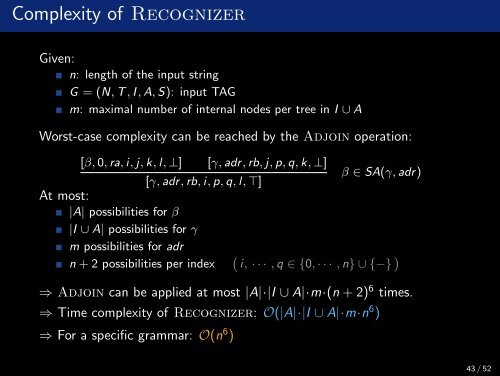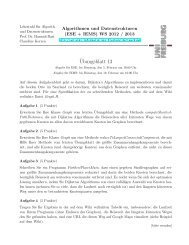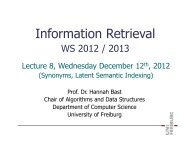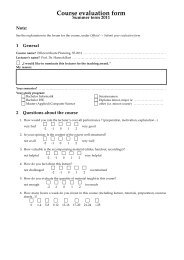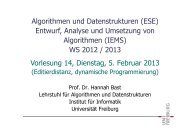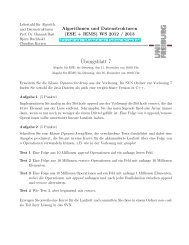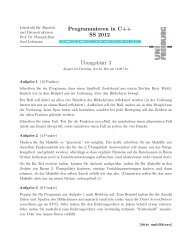Lexicalized Tree-Adjoining Grammars (LTAG) - ad-teaching.infor...
Lexicalized Tree-Adjoining Grammars (LTAG) - ad-teaching.infor...
Lexicalized Tree-Adjoining Grammars (LTAG) - ad-teaching.infor...
You also want an ePaper? Increase the reach of your titles
YUMPU automatically turns print PDFs into web optimized ePapers that Google loves.
Complexity of Recognizer<br />
Given:<br />
n: length of the input string<br />
G = (N, T , I , A, S): input TAG<br />
m: maximal number of internal nodes per tree in I ∪ A<br />
Worst-case complexity can be reached by the Adjoin operation:<br />
[β, 0, ra, i, j, k, l, ⊥] [γ, <strong>ad</strong>r, rb, j, p, q, k, ⊥]<br />
β ∈ SA(γ, <strong>ad</strong>r)<br />
[γ, <strong>ad</strong>r, rb, i, p, q, l, ⊤]<br />
At most:<br />
|A| possibilities for β<br />
|I ∪ A| possibilities for γ<br />
m possibilities for <strong>ad</strong>r<br />
( )<br />
n + 2 possibilities per index i, · · · , q ∈ {0, · · · , n} ∪ {−}<br />
⇒ Adjoin can be applied at most |A|·|I ∪ A|·m·(n + 2) 6 times.<br />
⇒ Time complexity of Recognizer: O(|A|·|I ∪ A|·m·n 6 )<br />
⇒ For a specific grammar: O(n 6 )<br />
43 / 52


